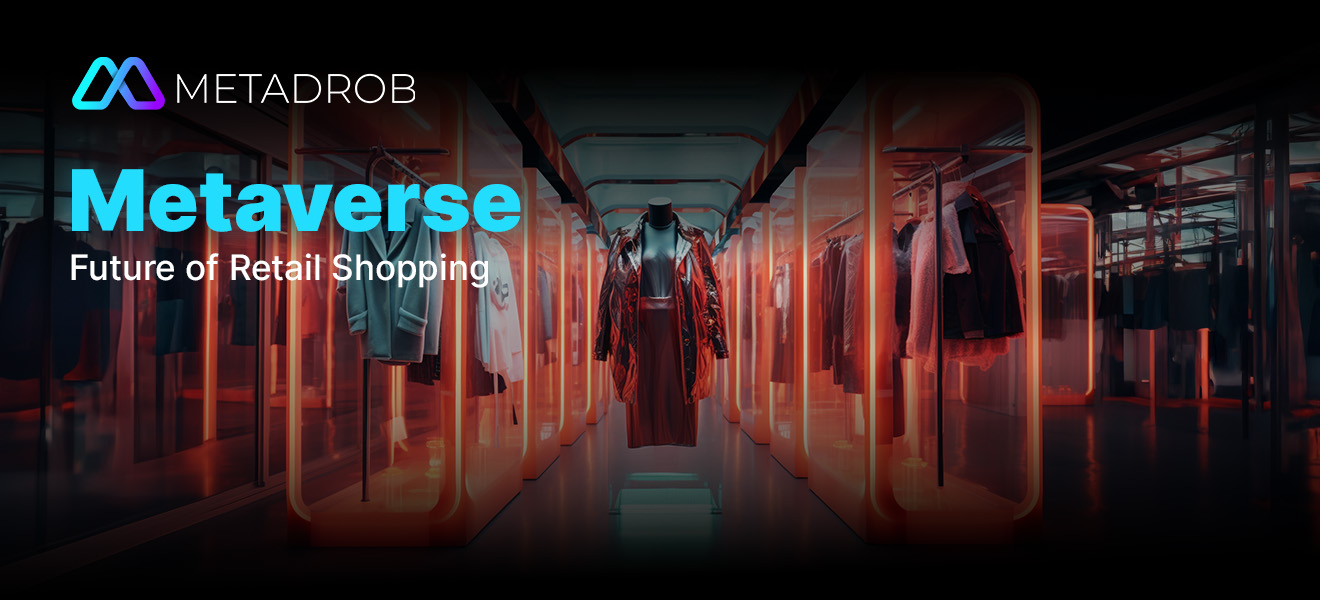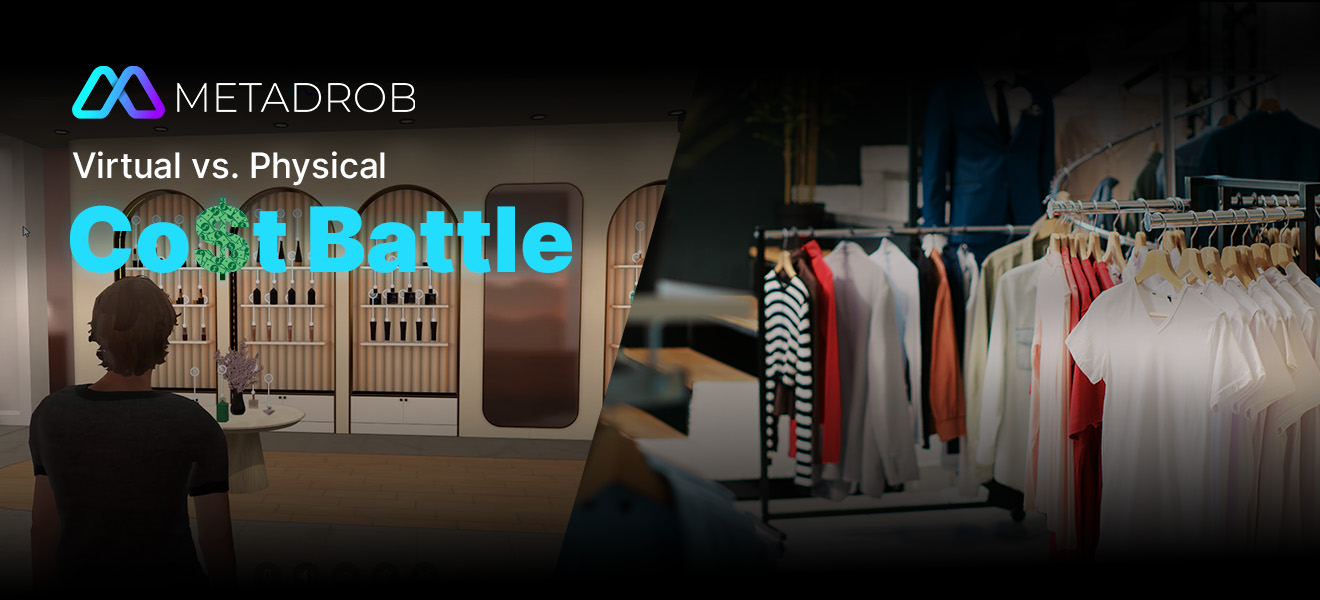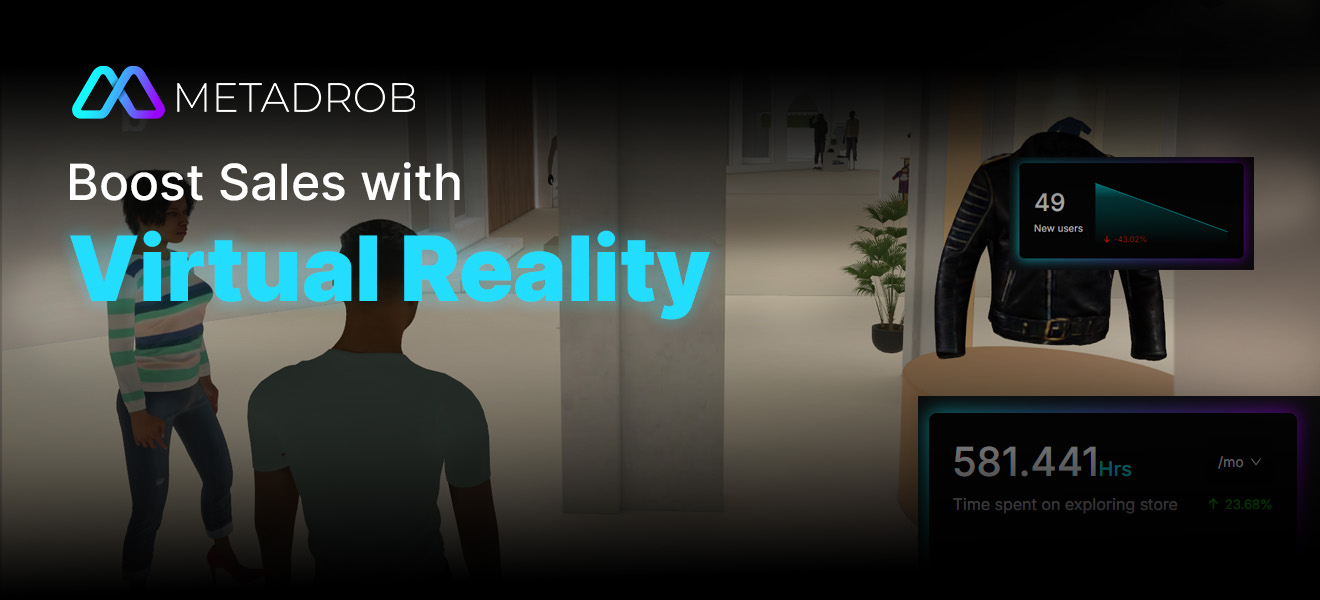Comparing Traditional Online Stores with 3D Virtual Stores: Which is Better?

The virtual reality market is expected to revolutionize the retail industry and is estimated to have a CAGR of 18% in the forecast period of 2021-2028.
Imagine a store where products are lifelike, where people do not need to go into the changing room to try on clothes, and where the store layout is based on the customers’ choices. This is how shopping will be done: 3D virtual stores will open a world of interactive activities.
These immersive experiences enable exploration, interaction, and decision-making beyond anything you’ve ever experienced in a digital marketplace. 3D virtual storefronts are redefining how we shop in this digital age by providing customers with never-before-seen opportunities to see, experience, and ultimately buy things confidently.
This article focuses on how these virtual 3D stores help customers in making decisions. Now, let’s get going.
Understanding the Customer Decision-Making Process
Purchasing used to be an easy process. After seeing a product and possibly trying it, you would either buy it or not. However, things have changed. With so many options available nowadays, choosing has turned into a maze.
Consumers frequently experience obstacles such as a lack of product details, trouble picturing the merchandise, and trouble with returns. Can you imagine choosing a sofa without first seeing it in your living room? It truly is a pain point.
Here’s where virtual 3D retailers come into play. It is like entering a portal to a fairy-tale-like world where you can ‘wear’ things and ‘spin’ them around to check their suitability, ‘lift’ them against walls to see how they would look in your room, and so on.
Gen-Z’s Perspective On Immersive Shopping Experience
Gen Z wants smooth, interactive shopping experiences since they were raised in a digital environment. In contrast to earlier generations, people mostly use social media (48%) rather than search engines (44%) to find products.
This generation of digital natives is usually attracted to visually appealing stuff. Retailers must use technology to offer immersive, individualized shopping experiences to win customers’ allegiance. Brands that provide memorable experiences through virtual try-ons, augmented reality, or social media-friendly in-store activations will appeal to Gen Z customers.
The Role of Immersive Technology in Shopping
Consider being able to preview what a new couch would look like in the living room before buying it or how the shoes will fit. This is not some fancy sci-fi; this is real and what immersive technology is. Some examples of these technologies include VR, AR, and the MR.
AR places digital components in the real world, VR creates whole digital worlds, while MR contains aspects of both. The very lifelike experiences that these technologies provide are revolutionizing the buying experience.
Products can be thoroughly examined, fitted, and even interacted with. This more thorough involvement gives you greater decision-making confidence. It’s also thrilling and enjoyable!
Benefits of 3D Virtual Stores for Decision-Making
- Product Visualization
- Observe it from every angle:
- Visualize it at your house:
- Farewell to returns:
- Interactive Product Exploration
- Personalized Shopping Experiences
- Recommendations customized for you:
- Access to virtual stylists:
- Data that is at your disposal:
- Enhanced Customer Engagement
Consider having the ability to examine a product as if it were in your hands, looking at it from every perspective. That is the capability of 3D virtual stores’ product visualization.
Zoom capabilities and 360-degree views enable you to examine every inch of a product. Eliminate speculating over its appearance.
Imagine how that garment would look on you or how that new sofa would fit in your living area. You can view merchandise in various environments using 3D virtual storefronts.
There is a lower possibility of returns and disappointment when you can see exactly what you are purchasing. You and the store both benefit from it!
Can you picture having complete control over the fabric and color of your ideal couch? Or dressing up without having to leave your house? The wonder of interactive product browsing in virtual 3D marketplaces is just that!
You can experiment with things in these stores like never before. To produce genuinely original work, you can experiment with sizes, colors, and styles. Are you curious to know how that new lipstick hue appears on you? With virtual try-ons, it’s feasible.
You can also stop worrying about whether the couch will fit in your living room. You may virtually arrange interactive product demonstrations in your home to determine whether they fit well. Isn’t that awesome? In essence, interactive product exploration eliminates uncertainty from the purchasing experience and gives you greater confidence in making decisions.
Consider a shop that is more familiar to you than your closet! That’s what customized purchasing in virtual 3D stores does.
Have you ever wondered how those brown jeans might look with that blue shirt? Virtual shops can make outfit recommendations based on your size, style, and previous purchases. Say goodbye to endless scrolling!
Do you need assistance selecting the ideal party dress? Virtual stylists can create looks specifically for you and provide professional advice. Like having a personal shopper available all the time.
Each buy, like, and click gives away something about your taste. These products are displayed to you by virtual retailers based on this data.
Personalized shopping makes finding what you love easier and more enjoyable than ever.
Consider purchasing without the tiresome scrolling and clicking! The game is being changed by 3D virtual stores, which make shopping enjoyable and social. Using gamification, shopping becomes an exciting journey. Consider accumulating points via mini-games, incentives, and store exploration. It’s similar to discovering your ideal wardrobe and leveling up!
The joy of online shopping with friends is brought to you via social shopping. Your team can provide feedback virtually in fitting rooms, and group shopping simplifies decision-making. It’s similar to having in-person shopping helpers at your disposal.
The best part? These all-encompassing experiences foster loyal customers. You are likely to return for more shopping when you have a good time and feel you are part of the store. So, the next time you shop online, make sure you get those online retailers with not only merchandise to offer. They are providing something of value.
Case Studies: Successful Implementation of 3D Virtual Stores
Let’s look at a few examples of companies enhancing customer decision-making through 3D virtual shops.
- SmartyPants:
- Logitech:
- Trek:
This business matches customers with appropriate products via a quiz. SmartyPants streamlines the decision-making process for new clients by posing targeted questions and providing visual aids. In addition to assisting clients in selecting the ideal product, this individualized approach lowers return rates and boosts customer satisfaction.
Customers can select their ideal workstation by answering questions in their “Ultimate Desk Setup” quiz. To help clients visualize the setup, Logitech provides a visual configuration at the conclusion. This interactive experience increases purchasing confidence while streamlining the shopping process.
Trek’s bike finder is a simple tool that assists clients in quickly selecting a bike. Trek facilitates decision-making by posing concise queries along with pertinent photos. The buying experience is improved when options are quickly changed and chosen options are visible.
Challenges and Opportunities of 3D Virtual Stores For Interactive Shopping Experiences
- Challenges
- Technical Restrictions:
- Costs:
- Security and Privacy:
- Opportunities
- Customized Shopping:
- Interactive Product Exploration:
- Global Access and Reach:
- Decreased Returns:
- New Experiences:
For the best experience, powerful hardware, dependable internet connections, and high-quality visuals are needed.
Creating and keeping up a 3D online store can be costly, which could raise the cost of the goods.
Establishing trust requires safeguarding consumer information and averting cyberattacks.
Using client information to provide experiences and product suggestions specific to each customer.
This involves letting clients closely look at items, virtually try them on, and see them in various contexts.
Reaching clients all around the world by removing geographical boundaries.
Refunds can be reduced by accurately representing the goods.
Applying VR/AR to establish the retailing environment.
Conclusion
To sum up, 3D virtual stores rapidly transform the traditional retail experience by enabling customers to make informed buying decisions. These stores increase customer pleasure and engagement by offering individualized recommendations, interactive exploration, and immersive product visualization.
3D virtual stores have the potential to completely change the retail industry by doing away with uncertainty and offering a genuine purchasing environment. Retailers need to use this technology to open up new opportunities for their customers.
Bridge The Gap Between Traditional Retail and 3D Virtual Interactive Experience With Metadrob
Metadrob enables online retailers to set up immersive 3D virtual stores, bridging the gap between traditional retail and the digital world. With the ability to look into things in great detail, these stores provide customers with an unmatched buying experience.
Businesses can improve customer interaction, boost revenue, and improve their online visibility by using Metadrob’s platform. With capabilities like product personalization, interactive demos, and virtual try-ons, Metadrob assists retailers in creating unique shopping experiences that build customer loyalty and trust.
So, schedule an appointment with Metadrob today!
Leave a comment
Leave a comment
Connect with Metadrob
Ready to take the first step towards unlocking opportunities, realizing goals, and embracing innovation? We're here and eager to connect.

+91 966-004-4020







Comments (5)
ikwbnemduNK,
08 August, 2024WUBjzHgbGu
lJXkMLoIeHi,
09 September, 2024yciCNoBRSalExLM
How to Boost Customer Engagement with Metaverse Shopping?,
09 September, 2024[…] Personalized Shopping: Therefore, by offering customers experiences and products that suit their preferences, the retailers can increase customer satisfaction and, hence, increase their loyalty. As a result, customers can make better decisions. […]
How Virtual Shopping is Shaping the Future of E-commerce? - Metadrob,
09 September, 2024[…] companies may provide their customers with a more interesting and informative buying experience by embracing virtual shopping technologies. This will increase sales and foster customer […]
Finn Pasco,
11 November, 2024Hey, if you are looking for more resources, check out my website 46N as I cover topics about Cosmetics. By the way, you have impressive design and layout, plus interesting content, you deserve a high five!